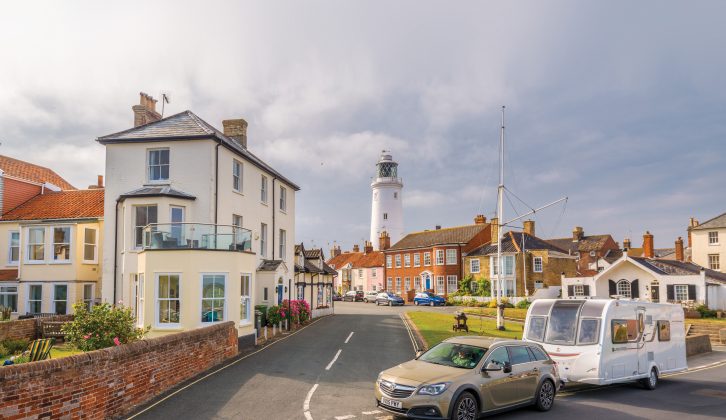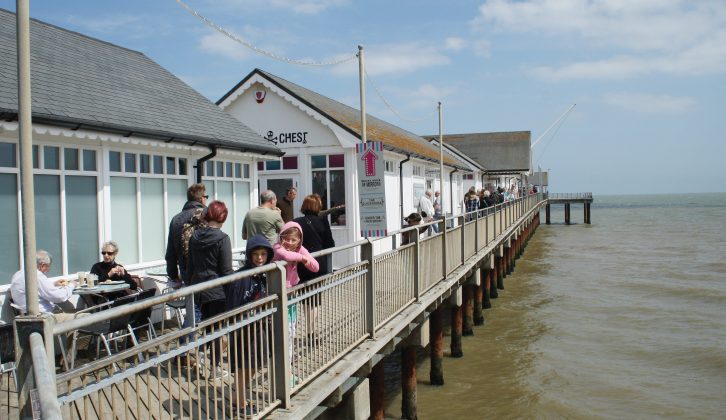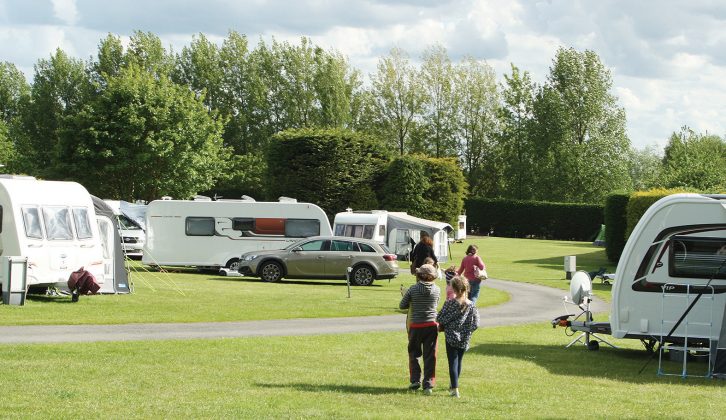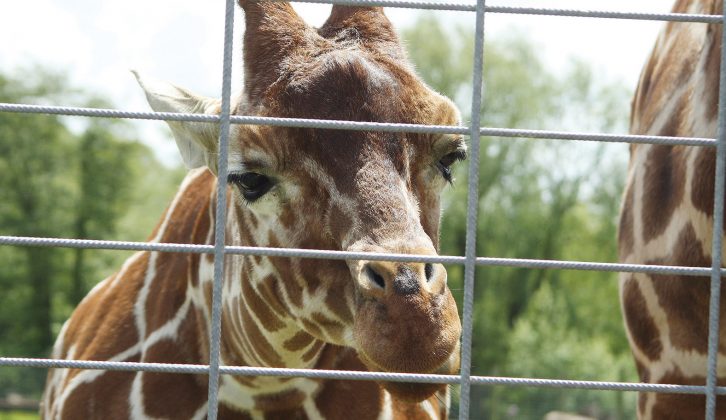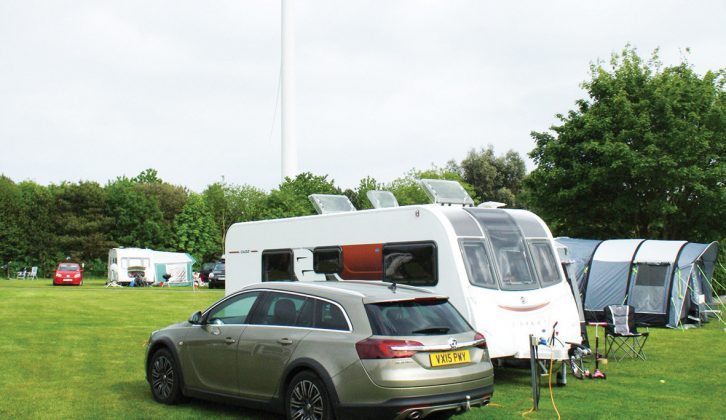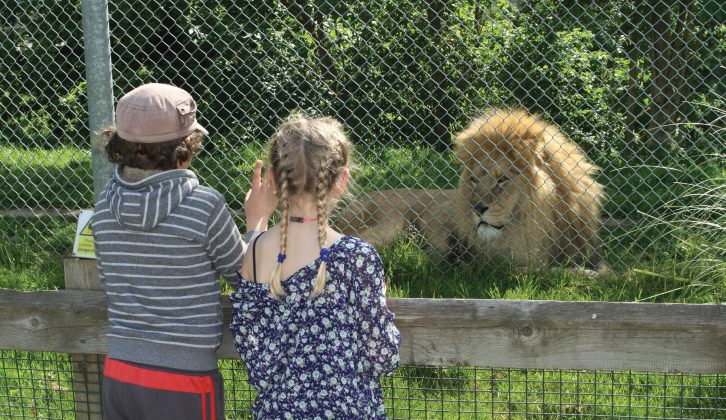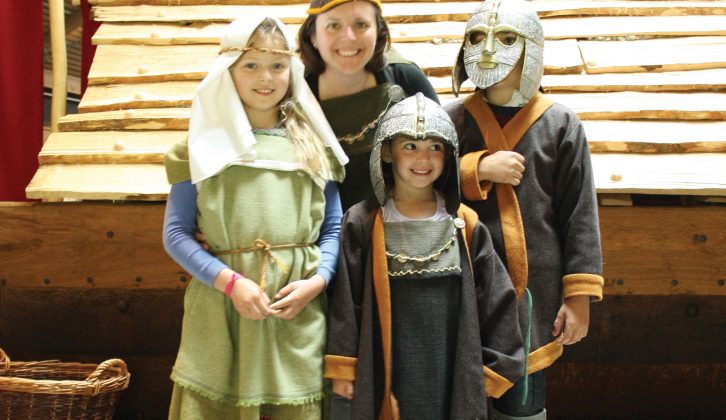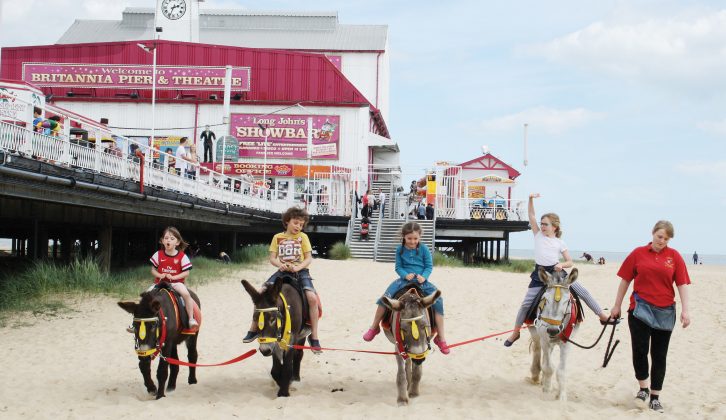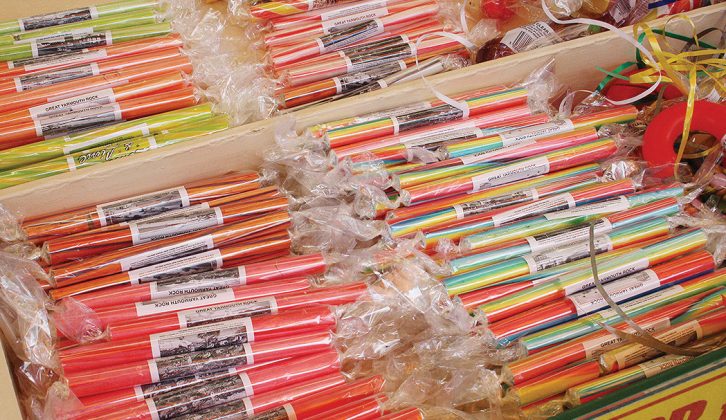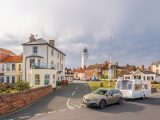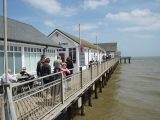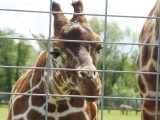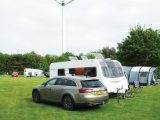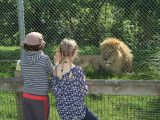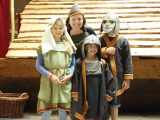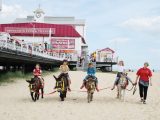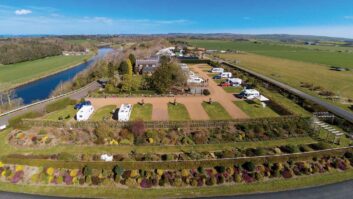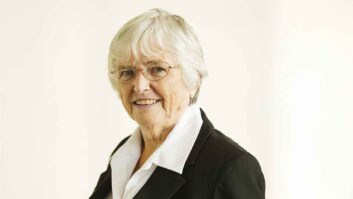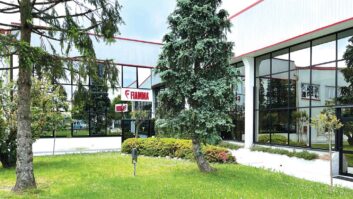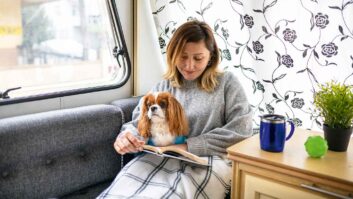English holidays for the Clements family have always involved heading south out of London and turning right – bound for the West Country, be it Dorset, Somerset, Devon or Cornwall. In part that’s because we visit Granny and Grandpa on the way, but unfortunately it means that the kids are missing out on great swathes of the British countryside – not to mention its coastline.
So when our great pals the Hunt family called to tell us that they had got hold of Gran’s campervan for half-term week, and wanted an adventure, we decided that this time when we got to the M25 we would turn left, and venture east to the Suffolk coast.
Although not much more than 100 miles away from our south London home as the crow flies, East Anglia feels like another world – not least because there are almost no motorways: the various estuaries ensure that few main roads make it to the coast. Still, despite being single-carriageway for the majority of the route, the A12 gets us there briskly enough – passing through a flat, green landscape that’s lush with farmland, boosted by the region’s rich soil. Naturally marshy, it was first drained by the Romans and has long been a key contributor to Britain’s larder.
That same earth – along with the care of the on-site team comprising Dave, Gerry, John and Liz – ensures that The Camping and Caravanning Club’s Kessingland site is verdant. The Vauxhall Insignia Country Tourer’s four-wheel drive makes it easy to get our Bailey Unicorn Cadiz installed on our grass pitch, and while we pitch the awning the kids set off to explore their surroundings. Although we’re near the A12, the high hedges that surround the site and the 5mph speed limit make it feel safe, so the kids are soon enjoying their new-found freedom.
Our first day is spent exploring the local area, checking out the former fishing village that the site is named after and sampling a pint of the local brew in the Five Bells Inn.
It quickly becomes clear that there is a special feeling to touring Suffolk, as if you’ve unearthed a gem that no one else has discovered yet… Until you hit the coastline and you find that they’ve got there before you!
A foot in each camp
We discover this when day two dawns bright and clear, and we pack beach towels and – optimistically – swimmers, then head for nearby Southwold. Unlike so many of our seaside resorts, which have had to sell their souls in order to survive, Southwold treads the line between traditional charm and commercial reality. This is obvious from the moment we arrive, as we park (for free!) in the town centre, in the shadow of the 1890 Southwold Lighthouse. Little ones might recognise it from the CBeebies series Grandpa in My Pocket, which also features Southwold Pier as a location for Miss Smiley’s café. But the association is not enough to persuade the kids to tour the building – not when there’s a sandy beach to explore.
Once we find a stretch where Basil the dog is welcome, and I nip back to the pier to grab buckets and spades, the sandcastle-building begins in earnest. This is an idyllic British beach, quite apart from its soft sand: beach huts line the front, with the attractive seaside architecture of the town behind and the worst of the sea kept in check by rocky groins. Not that I have any plans to follow Basil and the kids into the water today: instead I pop into town to grab a picnic at the Co-op, and we settle on the sea wall to munch slightly sandy sausage rolls with the shivering kids wrapped in towels – the British seaside holiday distilled!
For pudding, we amble back to the pier and grab ice creams all round. This is a brilliant traditional pier, from its broad boardwalk to its coin-operated telescope and the wacky ‘Under the Pier Show’ – an exhibition of bizarre homemade slot machines. Unexpectedly, you’ll also find a huge mural of George Orwell at the pier’s entrance: apparently the young Eric Blair (to give him his real name) moved to the town in his teens after his father retired, and returned in his 30s to live beside the chippie on the High Street! His sister even ran a teahouse in the town – though we’re relieved not to discover 1984-style surveillance cameras everywhere.
You can find out more about the resort’s history in the town’s museum or the Sailor’s Reading Room, or if you prefer to stretch your legs you can join the Suffolk Coast Path, which spans the coast for 50 miles from Lowestoft to Felixstowe. However, we are neither culture-vultures nor fitness fanatics today, because the children – Elsa, 9, and Niamh, 6, plus pals Max, 9, and Hannah, 6 – have discovered the amusements, and are already clamouring for a tubful of 2p coins. Once they’ve had their fill of flashing lights, loud electronic noises and poor-quality plastic toys, we head back to the van, make up the front double bed and put on a movie for them, while the grown-ups – Emma and me, plus Becks and John – enjoy a glass or two and watch the reflections of the sunset in the gently rotating wind-turbine vanes overhead.
Meeting the wild neighbours
Two nights of listening to the sounds of exotic animals on the other side of the hedge are enough to work the kids into a frenzy of anticipation. No, Suffolk doesn’t have a problem with oversized vermin: the noises are coming from the other reason why we chose this site, the Zoological Society of East Anglia’s Africa Alive! wildlife park. Quite literally on the doorstep, this fantastic attraction is an unexpected sight to come across in the flat Broads landscape of northern Suffolk, and there are special offers for those staying at Kessingland C&CC site – which is good news when entry for a family of four will set you back north of £60. Not that it isn’t worth it: the chance to see rhinos, zebras, meerkats, otters, monkeys, porcupines, flamingoes, wild dogs, vultures, cheetahs and more is a true privilege. And as a bonus, because the site is only a five-minute stroll away, we could leave Basil in the van with the rooflights open, and return to check on him every hour or so.
Walking through the Lemur enclosure gives Niamh the chance to get up close with the tame Somalian black-faced sheep, while Hannah is thrilled to feed the goats in the farm area. Inspired by her Born Free namesake, Elsa heads straight for the Kingdom of the Lion, ably protected by Max, and all of the kids are soon running from enclosure to enclosure to collect stamps for the Passport Challenge, all desperate to win an animal medal from mascot ‘Reggie the Lion’ for completing their passports. What energy they have left is then expended in the huge play area, while the parents busy themselves with more mundane things – such as the fact that the food is surprisingly reasonable, with great kids’ boxes… well, we were left feeling rather peckish after watching the giraffes’ feeding time!
Of course, if you’re keen to see a few more local critters there’s nearby Benacre National Nature Reserve, while fans of winged wildlife should check out the RSBP reserve at Minsmere, which boasts more than 300 species of birds. But none of them offer the opportunity to find your way back to the site on foot by following the wind turbine!
We had thought that the kids’ appetite for seaside fun had been sated by our visit to Southwold. We thought wrong. So the next item on the agenda is a short trip across the border into Norfolk, and one of the region’s most famous holiday destinations: Great Yarmouth. Now, a word or two of warning here: it might be located in the Broads National Park, but this is a town where, if you plan to visit the front at least, you need to leave your cynicism in the car – or, even better, back at the site. Because the only way to enjoy this Blackpool of the east is to throw yourself into it; and if you need any pointers, just watch the children.
As we drive in along the seafront, the “oohs” and “aaahs” build, and by the time we have found a space for the car (£4 this time, free parking here is pretty limited) they have decided the order of the day ahead, ride by ride. First is the huge inflatable ‘Everest’ slide on the beach, where fearless Niamh throws herself down with abandon, while those seeking a quieter thrill sample the fairground swing boats or feel the sand between their toes on the well-kept beach.
The weather is great so we decide to skip the temptation of the Britannia Pier and instead pay £10 to give all four kids the ultimate traditional seaside treat: a donkey ride. The Parkers Donkeyworld animals are well cared for (passengers are limited to eight stone), and the children are delighted by this simple pleasure, as they plod the length of the pier and back, in the shadow of its theatre. The rickety rollercoasters of the Pleasure Beach are next, then yet more 2p coin-push machines before candyfloss and sticks of rock from the Potters Rock Factory. As darkness begins to fall, we pour the weary kids back into the car and return to the cosy warmth of the van, where for once they turn in without complaint.
Ship aground in Sutton Hoo
Following such excesses, it’s time for the parents to wrest back control of the itinerary, so for our final full day we head 40 miles south and a little inland to the National Trust’s Sutton Hoo. On the way, however, we decide to stop off in nearby Woodbridge to pick up a bit of shopping – or at least, that is the excuse to park up and nip into The Anchor, a much-recommended pub on the quayside with attractive and historic interiors. More importantly, it also serves a fine pint of IPA and some fantastic yet well-priced food – my beef brisket is sensational, but Emma swears that her slow-roast pork belly with dauphinois potatoes is even better!
Sutton Hoo itself is a fascinating place, and one that – we discovered too late – you really need to dedicate at least a full day to. In fact, you could easily spend a couple of days exploring this site, which is two attractions in one. The most famous element, drawing some 100,000 visitors to the venue every year, is a series of burial mounds thought to have contained the remains of the Wuffingas Anglo-Saxon kings of East Anglia. Key among these, and the first to be found, is the grave of King Raedwald, who was buried in around AD625 along with his treasures – and even his 90ft ship.
This was unearthed in 1939, just a few months before the outbreak of war, by local archaeologist Basil Brown. There is a recreation of the burial chamber inside the Sutton Hoo exhibition. (Dog owners visiting the exhibition will be pleased to know that there is a loop outside to tie up your four-legged friend, along with topped-up water bowls.) There is plenty to see, including the mounds themselves: further excavation in the 1980s and early 2000s revealed more than 40 more mounds, including one containing an Anglo-Saxon warrior and his horse, plus various graves. Inside the visitor centre the kids have a go at making origami ships. Before heading into the burial chamber, the children can even become Saxons themselves, courtesy of a large dressing-up box!
We can’t leave without paying a visit to the second part of the Sutton Hoo estate, Tranmer House. Although it appears unrelated to the historic treasures, the handsome 1930s mansion overlooking the River Debden valley in fact belonged to Mrs Edith Pretty, who employed archaeologist Brown to dig on her land and later gave the hoard to the British Museum. Her family donated the 200-acre estate to the Trust in 1998, and there is now a recreation of Basil Brown’s workshop in the grounds.
A highlight of this building for the children is the attitude that the Trust has taken to its preservation: far from the ‘Please do not touch’ line of old, it welcomes kids to sit on the sofas and listen to the gramophone as they search for items on their ‘Tranmer Trail’ worksheets. Elsa is bowled over when one of the volunteers lets her flick through the pages of a first edition of Little Women – the very book she is reading back at the van.
There are apartments to rent within the house, which is rather tempting because the rain is beginning to fall, as if signalling the end of our fun. The heavens open as we pack up the awning and hitch up for the gentle trundle back down the A12 to reality. This area of the UK is hardly undiscovered, but compared to many more popular beach resorts it never seems overcrowded. It has culture, nature and (hopefully) sun, sand and sea – what more could you want? Trouble is, with only a week available to us, we’ve barely dented our ‘to-do’ list. So will we head east again instead of west? Definitely – now, if we could only persuade Granny and Grandpa to relocate…
Fun facts – did you know that?
- George Orwell was expelled from school in Southwold for sending a dead rat to the town surveyor.
- Southwold provided the beach backdrop for the movie Iris, starring Judi Dench and Jim Broadbent .
- Somalian black-faced sheep are known as ‘fat buttocks sheep’, because they store fat in their hind quarters.
- Great Yarmouth features its own Nelson’s column, in tribute to one of Norfolk’s most famous sons.
When to go
If you want to make the most of the beach, the summer is best – but be aware that the nearer you get to high season, the bigger the crowds at the larger resorts. Early autumn, particularly if we have another Indian summer, or late spring are also good bets – we went for the latter, and the site’s hard ground and good drainage kept the grass pitches intact.
Where we stayed
Kessingland Camping and Caravanning Club Site, Whites Lane, Kessingland, Nr Lowestoft, Suffolk NR33 7TF. Tel 01502 742 040. Pitch+2+hook-up £19.65-£30.65 (plus non-member supplement). Open 17 March-31 October. 90 pitches.
Non-members are welcome at the attractively landscaped Kessingland site, with spacious grass pitches in the shadow of two large wind turbines – whose rhythmic sound is never unpleasant. It’s not the only unusual noise at Kessingland: from your pitch you can here the lions roar and the birds squawk in the adjacent Africa Alive! wildlife park.
The pitches have hook-up and, like the rest of the site, are beautifully maintained; the single large toilet block isn’t the most modern we’ve seen, but it’s very clean and there are separate rooms for disabled visitors and families. There’s a small shop on-site, security barriers, and a laundry. TV signal is poor, but there is club Wi-Fi (at extra cost). Families will appreciate the large kids’ play area and the safe feel from the surrounding hedges, while there’s a short dog-walk area and, if you want to stretch your legs further afield, the sand/shingle Kessingland Beach is a mile-and-a-half walk away.
Way to go
Access to the Kessingland site couldn’t be easier, because it’s located just off the main A12 roundabout (albeit at the end of a rather bumpy road). That means a very pleasant, if relatively long, drive from the M25 if you’re approaching from the south. If coming from the north, take the A14 exit from the A1 then cut across country or turn on to the A12 after skirting around Ipswich.
Food and drink
- The Anchor in Woodbridge has a fantastic menu (we had superb beef brisket and pork belly) at this historic pub. Tel 01394 382 649.
- Kessingland Pizza takeaway delivers to the campsite! Tel 01502 744 229.
- The Five Bells Inn is a short drive from the site and has a lovely beer garden with free-roaming chickens. Tel 01502 675 249.
- Potters Rock Factory is one of several traditional confectionery shops along Regent Road, Great Yarmouth. Tel 01493 856 629.
Great places to visit in Suffolk
- Sutton Hoo. Tel 01394 389 700.
- Africa Alive! Tel 01502 740 291.
- Great Yarmouth Pleasure Beach. Tel 01493 845 546.
East Anglia feels like another world – not least because there are almost no motorways
